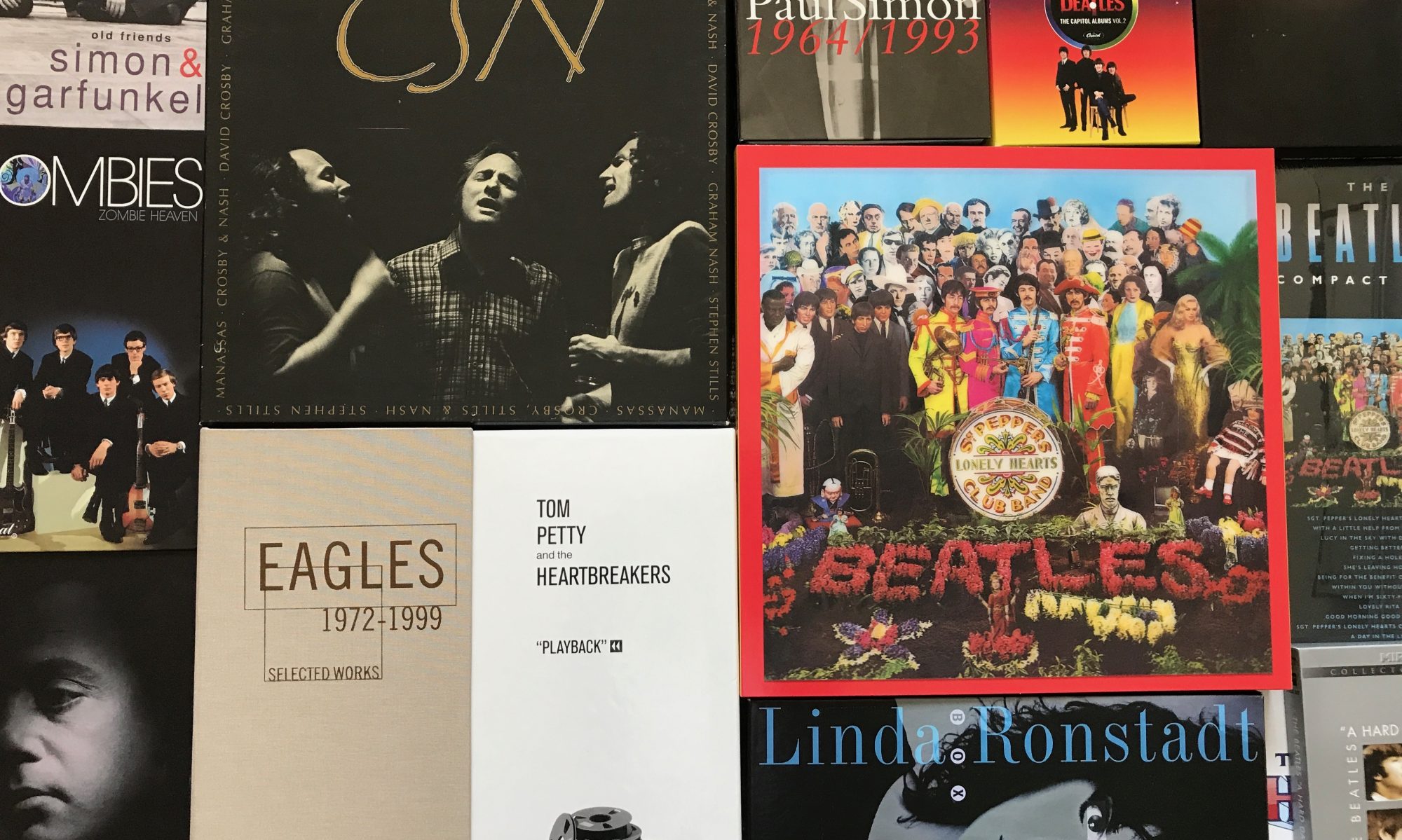(After the sad news of Tom Petty’s passing, this article about his four decades of success was updated.)
Are Tom Petty & The Heartbreakers considered ‘70’s artists? ‘80’s? ‘90’s?
All too often music careers only last a few years. Tom Petty & The Heartbreakers had hit singles and hit albums since they released “Breakdown” in early 1978, and they still had hit albums and sold out arenas nearly 4 decades later.
 Mike Campbell, Ron Blair, Tom Petty, Stan Lynch, & Benmont Tench
Mike Campbell, Ron Blair, Tom Petty, Stan Lynch, & Benmont Tench
As Disco was fading in the 1970’s, the Punk and New Wave movements arose. People tried to put one of those labels on Tom Petty & The Heartbreakers, but they didn’t fit either one. After all that Disco, maybe Rock & Roll was hard to recognize. Petty’s band from Gainesville, Florida was mostly influenced by groups like The Byrds, The Beatles, and other bands of the British Invasion.
Let’s just break it down by Decades.
In the late 70’s Tom Petty & The Heartbreakers charted three albums…Tom Petty & The Heartbreakers, You’re Gonna Get It!, and Damn The Torpedoes. Major songs included “Breakdown”, “American Girl”, “Don’t Do Me Like That”, and “Refugee”.
The ‘80’s were big, with six Tom Petty projects…four albums with the Heartbreakers, Hard Promises, Long After Dark, Southern Accents, and Let Me Up (I’ve Had Enough), a huge solo album Full Moon Fever, and the superstar project The Travelng Wilburys (with George Harrison, Bob Dylan, Roy Orbison & Jeff Lynne).
The singles in the 1980’s featured “The Waiting”, “Stop Dragging My Heart Around” (with Stevie Nicks), “You Got Lucky”, “Change of Heart”, “Don’t Come Around Here No More”, “Jammin Me”, “I Won’t Back Down”, “Runnin’ Down A Dream”, “Free Fallin’ ”, “Handle With Care” and “End Of The Line” (also check out the Wilburys’ “Last Night” and “Cool Dry Place”). It was the decade of MTV videos, and Tom Petty was featured prominently.
After another Traveling Wilburys album, Tom Petty & The Heartbreakers continued in the 1990’s with the albums Into the Great Wide Open, She’s The One (movie soundtrack), and Echo. Hits included “Learning To Fly”, and “Mary Jane’s Last Dance”. That last one is from their Greatest Hits album, which has sold over 12-million copies in the U.S. Petty also released another multi-platinum-selling solo album Wildflowers. “You Don’t Know How It Feels” was the main hit from the album, with “You Wreck Me”, “It’s Good To Be King”, and the title track among songs getting airplay.
The ‘90’s were a time of big changes in the Radio industry. Formats splintered into niches, and Billboard magazine did the same thing with their charts. By the turn of the century, it was hard to know where to find rock & roll on the dial.
Tom Petty & The Heartbreakers addressed the upheaval in Radio with their album and song The Last DJ from 2002. It complained about the lack of the human element in selecting what was played, because of the tight playlists on many corporate stations. “The Last DJ” is a really good and commercial-sounding single, but Petty didn’t endear himself to radio programmers, some of whom took it personally.
Next for Tom Petty was another solo album Highway Companion in 2006. It was a Gold-selling album. This solid effort featured “Saving Grace” and “Square One”, but the national trend was a severe reduction in the representation of Rock anywhere. Pop, Hip-Hop, and Country had taken over music.
In 2010, Tom Petty & The Heartbreakers got their mojo back. Well, at least they released an album named Mojo. It was fairly well received by fans and critics, and went to #2 on the Billboard album chart. In fact, their 2014 rock album Hypnotic Eye hit #1. The only problem is…the charts don’t mean much anymore, because sales of albums are so small. Proof is that one of the Heartbreakers’ lowest selling albums topped the charts.
Tom Petty seemed to fully understand the situation. So he decided to re-form his original band from Florida, “Mudcrutch”. With charts and airplay not mattering anymore, why not? Mudcrutch (still a crazy name) allowed Petty to do something that’s a mix of Country Rock, Americana, and The Heartbreakers own sound. The band included guitarist Mike Campbell and keyboardist Benmont Tench, making it three-fifths of the band we’ve loved for decades.
The first Mudcrutch album was released in 2008, and Mudcrutch 2 in 2016. I’m partial to the second album, which has quite a few high-quality Tom Petty originals. But there’s at least one don’t miss song on the first album “Crystal River”.
Four decades on, and Tom Petty kept producing excellent songs no matter what the musical landscape threw at him. He never did back down.
Tom Petty & The Heartbreakers had just completed a summer tour that celebrated their 40th Anniversary. Then, on October 2nd, 2017, Tom Petty died at the age of 66. It was later determined that he died of an accidental overdose of pain killers he’d been taking for a broken hip. A major loss, too sad for words. He’s greatly missed.






































































































